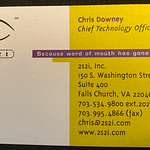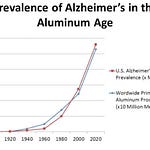
Skepticism, like chastity, should not be relinquished too easily. —Santayana
Here is the video transcript:
Whole Foods sells the image that “organic” is better for the environment and you. It has 175 stores, is the undisputed leader in organic foods, and promotes locally grown food. Our team has found that many Whole Foods organics are imported from China. But the USDA does not inspect imported foods. It certifies private inspectors to do the job. Whole Foods uses a company called Quality Assurance International, but they confirm, “QAI has not certified any products in China.”
Already this year, the FDA has stopped 260 shipments of foods like strawberries contaminated with pesticides, bacteria, and filth. A consumer found plastic integrated into the stems of broccoli from China. And over the last decade, reports of counterfeit food are soaring. Criminals are making a killing, sometimes literally, selling cheap and dangerous imitations of everyday food.
This story alleges that Amazon, the censor, is also selling us fake food from China. Trader Joe's does better. They responded to consumer outrage and quit importing food made in that country.
I thought the US banned all food imports from China after the food scandal described below, but I learned today that about one percent of US food originates there.
A Chinese company sold baby food containing a cheap, non-nutritive imitation protein called melamine to their own population. After babies were sickened and some died, several company leaders were executed. Allowing China to export into the US is insane, for our country produces at least a third more calories than we (should) consume.
Regulating imported drugs presents similar problems as controlling imported food. We have little hope of closely monitoring our domestic production lines for either, let alone those in other countries. I explain how it works in the following excerpt from Butchered by "Healthcare.” We have allowed Pharma criminals to jack their patent drug prices up so high that we are primarily forced to use inferior foreign generics. If we could stop this thievery, a ban on foreign medications would be the best solution.
GENERIC DRUGS: GOOD, BAD, OR FAKE?
The history of the twentieth century was dominated by the struggle against totalitarian systems of state power. The twenty-first will no doubt be marked by a struggle to curtail excessive corporate power. —Eric Schlosser in Fast Food Nation
We have allowed our patent drugmakers to gouge us so thoroughly that we can no longer afford their products. The result is that ninety percent of America’s medications are now generics. Until recently, I believed that these were practically equivalent to the brand names, but it stunned me to learn I was wrong.
Generics are not exact copies of trade-name drugs. The manufacturers do not have the original recipe, and production outside the brand factories tends to be less careful. Overseas, there might be hygiene problems or extra ingredients added. These can change the way a drug works or even be harmful.
We permit new companies to manufacture drugs after the patent expires. Other companies make generics in foreign countries where patent laws are ignored. The drug’s chemical name is used to market generics rather than the original trade name, and sometimes the generic drugmaker makes up their own trade name.
Lipitor generics illustrate how it works. Richard Mason (Harvard), collected thirty-six samples of this statin drug from fifteen countries and two dozen manufacturers between 2011 to 2013. Analysis proved that thirty-three had impurities that thoroughly compromised them. This is beyond atrocious, but the backstory is worse.
When the patented version of Lipitor was originally studied during its approval process, only two small groups lived longer: those who had a previous heart attack and (possibly) those with hereditary high cholesterol. This alleged success was used to support marketing to nearly anyone with slightly high cholesterol. There are now 35 million US citizens taking Lipitor. It is not just the bestselling statin, but in 2011, it was the bestselling medication of all time.
Lipitor was an ideal drug for fraudulent generic copies because the genuine item was nearly worthless. Neither the doctors, the public, the study authors, nor the writers of the two otherwise excellent resource books I used for this chapter ever understood the irony.
Although the brand-name drugmakers are guilty of many sins, they are rarely accused of poor manufacturing standards. They get so much money from the monopoly and third-party reimbursement that they can afford to make drugs accurately. Their only recent production issues have been Gilead’s hepatitis C drug and a few cancer, migraine, and HIV medications.
The generics are another story. Because of our soaring drug prices, eighty percent of all US medications now originate in India or China, counting both ingredients and finished products. A 1970 Indian law allowed copying patented drugs. The only requirement was that the manufacturer had to alter some step in their process. Soon, they were producing forty percent of our generics. Some are close replicas, but others are weak, and some have extra ingredients that produce harmful effects. When doctors use weak (substandard) or ineffective (counterfeit) drugs for sick people, suffering and occasional death result. With antibiotics, weak ones breed resistant bacteria, the “superbugs.”
Proper drug manufacture requires painstakingly clean and sometimes sterile chemistry. Testing and documentation at every step is the traditional way to assure quality, and this is expensive. If the makers cut corners, the savings are at least 25 percent. The horror stories about careless overseas manufacture include tablets containing bugs, glass, and hair. Inspectors have discovered facilities with bird infestations and a sterile factory in the middle of a pig farm. There are thousands of drug-making shops, and monitoring them all is impossible.
Katherine Eban in Bottle of Lies (2019) depicts the FDA as sluggish, grossly under-funded, understaffed, uncaring, incompetent, and sometimes corrupt. Worst of all, they are under severe political pressure to speed cheap foreign generics through the approval process. Despite this, and although we regard the Japanese and European agencies highly, the FDA is still the world leader in quality-assurance.
Their goal is to do an investigation every two years on every US and overseas manufacturing operation that makes products sold in the US. This happens domestically, but abroad they are lucky to perform one check per facility every ten years. Surprise inspections are routine in the US, but in foreign countries, the FDA allows scheduling, so managers have a few weeks to clean things up before investigators arrive. In the past, plant records were on paper, but now, computer systems pose additional difficulties for auditors.
With a visit of only five to seven days, even the most sophisticated, motivated, and aggressive inspector has trouble sorting out what is happening at a manufacturing plant. Since they are paid US government wage scales, they are rarely enthusiastic about foreign travel. Other obstacles include language and cultural barriers, bribery, threats, and even being housed in bugged hotel rooms that allow the local managers to listen to their conversations.
The FDA has comprehensive rules about drug making, and most inspectors try to enforce them. Peter Baker, a top investigator who was working in India, resorted to looking in the facilities’ garbage for discarded complaint files and testing documents. He chased employees through buildings after observing them hiding records. He got into computer systems and found faked data. He caught entire rooms of people falsifying information.
The rise and fall of Ranbaxy, an Indian corporation, is Eban’s major story. She quotes Dinesh Thakur, one of their employees:
[Ranbaxy] substituted lower-purity ingredients for higher ones … altered test parameters so that formulations with higher impurities could be approved. They faked dissolution studies… [and] crushed up brand-name drugs… so that they could be tested in lieu of the company’s own drugs. They superimposed brand-name test results onto their own … [and] fraudulently mixed and matched data streams… [and] invented data. Document forgery was pervasive… employees backdated documents and then artificially aged them in a steamy room overnight in an attempt to fool regulators… It was common knowledge [throughout the corporation].
He warned his superiors that their only option was a systemic overhaul. They ignored him. He quit, and he contacted the FDA in August 2005. Whistleblowers in India sometimes get murdered. Thakur’s spiritual and ethical compass drove him to risk his life and career for the patients taking his company’s drugs.
The FDA was clueless about Ranbaxy, but when Thakur handed them nearly every detail, they opened a file. By 2008, three years after Thakur’s first contact, they had done little. The agency only woke up when the Maryland US Attorney filed a court motion about Ranbaxy. This reported there was a “pattern of systemic fraudulent conduct by the company” and that the “violations continue to result in the introduction of adulterated and misbranded products into interstate commerce with the intent to defraud or mislead.” Two weeks later, the FDA received a heads-up email that there would be a congressional investigation into why the agency had not banned Ranbaxy’s products from the US. After this second warning, the FDA administrators began writing memos justifying themselves. They banned drugs coming into the US from two Ranbaxy plants but did not recall medications that were already in the US.
After Thakur left the company, his fortunes and finances declined. He initially did not understand that he could ever get paid for standing up to Ranbaxy, but years later, US class-action lawyers took the case. After arduous litigation, Thakur received $48 million. He then worked for two years on a lawsuit against the Indian federal government, claiming their broken drug regulation structure was unconstitutional there. His lawyers billed him $250,000, but the court dismissed the case after a brief hearing. His motivation was never about the money.
Ranbaxy might be an extreme case, but Eban shows that clumsy FDA oversight of foreign operations causes harmful drugs, injured patients, and corporate corruption.
More stories from Eban: GVK Biosciences was a contract research organization used by Indian firms to document their medication quality. An employee whistleblower alleged they performed routine data manipulation, and after investigation, the European Medicines Agency suspended European distribution of seven hundred drugs they had tested.
A 2014 inspection by four international regulatory agencies, including the FDA, proved that GVK committed fraud. For example, they found exact duplicate EKGs on multiple patient records. In 2016, the corporation quietly withdrew from the testing business. There were no consequences for their leaders, but the whistleblower was imprisoned in India.
Ranbaxy's standards were different for different markets. Where there was oversight, such as Europe, they sold somewhat higher quality drugs but still cheated in ways that were hard to detect. For example, they often faked expiration dates and tested one set of samples while selling others. But for Brazil, Thailand, Vietnam, Peru, Kenya, Uganda, Egypt, and other African nations, they completely fabricated the testing and manufacturing data and used lower quality ingredients.
In parts of Africa, doctors often keep supplies of patented drugs they know work. They use these for cases where the generics are not working. Because some generics are less active than the genuine thing, another strategy is to double and redouble the doses when necessary. Having an active drug is essential for gravely ill people, such as those with meningitis.
With India and China, the world’s two major discount drugmakers, you get what you pay for. Each has its own unique issues.
India has cheap labor and an English-speaking workforce, both significant advantages. Ramesh Venkataraman recently described the disadvantages in the Indian Express:
Ask any international businessman or investor about India, and the word “difficult” is bound to pop up.… India, despite its many obvious attractions, is seen as a tough place to do business in. Red tape and the inconsistent and arbitrary manner in which our governments have administered taxes and investment rules and regulations is, of course, an important reason for this sentiment. But what polite and politically correct international investors will not say openly is that Indians are seen as highly unethical.
The 2016 “Global Business Ethics Survey” ranked India in the bottom three of thirteen major countries, along with Russia and Brazil. This measures illegal activity, abuse of ethical principles, and violations of organizational values observed by employees. Ernst and Young’s “Asia-Pacific 2017 Fraud survey” reported that 78 percent of respondents from India said that bribery and corrupt practices are frequent.
Transparency International found 69 percent of people surveyed said they had to pay a bribe, the highest rate in Asia. Another article in the HinduBusinessLine.com explains: “Businesses [in India] short-change customers and other businesses. Finally, a breakdown of trust boomerangs on them.” They give examples that range from tourism to financial services to housing. Doctors take inducements as well.
These problems are petty thievery compared with ours, however. American healthcare is systemically corrupt on a mammoth scale, but no-one ever acknowledges it. Eban did not understand the irony of being critical of India. Their graft is amateurish.
India’s poverty and 25 percent illiteracy rate must contribute to their business style. On the interface between two contrasting cultures, trust becomes tenuous and costs go higher, sometimes in concealed ways such as poor quality. With these obstacles, the only way to get top quality work is the use of overbearing supervision, which is difficult from thousands of miles away.
The authors of China Rx (2019) explain the difference between the two countries: “India is different from China because it is not an existential threat to the United States. It does not have a centralized plan, designed and executed at the highest level of government, to drive out global competitors, dominate the world market, instill fear of retribution, or use its leverage to extract economic and political concessions from countries dependent on it.”
The Chinese work ethic is almost religious. In theory, their culture is well-suited to the exacting manufacturing standards required for drugs. In theory, they need little supervision after a task is delegated.
Just as in India, however, many people in China are out to make a fast buck. A heparin formulation that Chinese firms sold to the US contained a synthetic ingredient, oversulfated chondroitin sulfate. The FDA speculated that the drugmaker added this substance to increase the amount of product to sell. Reactions to it were sometimes life-threatening. By 2008, there were 81 US fatalities. One man lost both his wife and son to the drug within a month.
US scientists discovered NDMA, a carcinogen once used in rocket fuel, in Chinese-made Diovan (valsartan), a blood pressure medication. In an unusually frank admission, the manufacturing company explained that this was also used to increase yields. European regulators recalled dozens of products.
Melamine is a plastic introduced into the domestic Chinese milk supplies to make them seem to contain more protein. Several hundred thousand babies fell ill, and more than ten died. Twenty-five foreign countries banned Chinese milk. The Chinese executed two leaders of the milk producers in 2009, and others involved in the scandal received lengthy prison sentences.
The first head of China’s FDA-type agency took bribes to approve untested medicine. Ten deaths occurred, and China executed him in 2007. There must be more to the story, but we have no idea since it is China.
In 2015, Peter Baker, who spoke only rudimentary Mandarin, was the only FDA investigator stationed in China. He was responsible for over 400 facilities, and his experiences were similar to those he had in India. He saw ruined or vanishing audit trails, and the Chinese routinely denied him access to records and even entire facilities. They sometimes transported him to plants that were counterfeit Potemkin-village setups.
Solutions: As a stopgap, some US institutions are operating like a mini-FDA. For example, Cleveland Clinic detected reduced efficacy of certain generics after the cardiology patients who took them got sick or even died. Lab testing proved certain ones were inactive, so the doctors substituted brand-name drugs, and many patients improved. Since then, the Clinic developed a program to test generics. Other groups have followed suit.
The FDA is ineffectual. Since corporate fees pay 46 percent of their 2019 budget (the low estimate), closing dangerous manufacturing operations affects the FDA’s ability to make its own payroll. And when drugs never get approved, the agency loses revenue. And although the FDA has no directive for speedy drug and device approval, Congress applies pressure to make novel things available sooner and relieve perceived shortages. The corporations leverage these perverse incentives and make the FDA’s enforcement process anemic.
The following would fix our system. We know what is ineffective—attempted oversight of thousands of manufacturing facilities around the globe by this US agency. Our well-meaning traditional quality control method involves checking documents and examining processes rather than testing products.
Because drug analysis is now cheap, I propose we spend the FDA budget testing drug samples at their point of entry into our system. They have already started limited testing programs, but the budget is only a few million dollars. Since three of the US wholesalers account for 90 percent of the drugs sold, they could enforce such a system. They pay our taxes and could be penalized if they do not cooperate. When we discover weak or harmful drugs, we must fine or ban overseas companies from our marketplace.
The money received must go into the general tax revenue. It should never go back to the FDA because, like user fees, this works like a kickback. This system I suggest might substitute for all the rules, checklists, investigative work, and inspectors riding around on bad roads in foreign countries. Why should we care about the manufacturing process if the ultimate results are acceptable?
The Cassandra's Memo ebook is free HERE if you promise to send this download link to five or more others. With your help, we will educate some people sitting on the fence. If you have time to write a review at Barnes and Noble, click HERE and scroll down the page until you see the blue “review” button on the right.
BONUS: I am also giving away the Hormone Secrets and Butchered by "Healthcare" ebooks using the same arrangement; you can download them free HERE and HERE if you promise to send the links to your friends.
We are in an information war. As Peter McCullough says, once someone sees, they cannot unsee. You are drafted—but only if you give a damn—to start a Substack, upload your entire phone list, then mail them once a week as I suggested HERE in “Your Conscription Notice Into the Revolutionary Army.” You have something to say, and even if you doubt that, you should copy and send out the words of others. If you think this is too much work, contemplate what it was like at Valley Forge during the Revolutionary War. You may find yourself in a situation like that someday soon.
Substack Love














Share this post